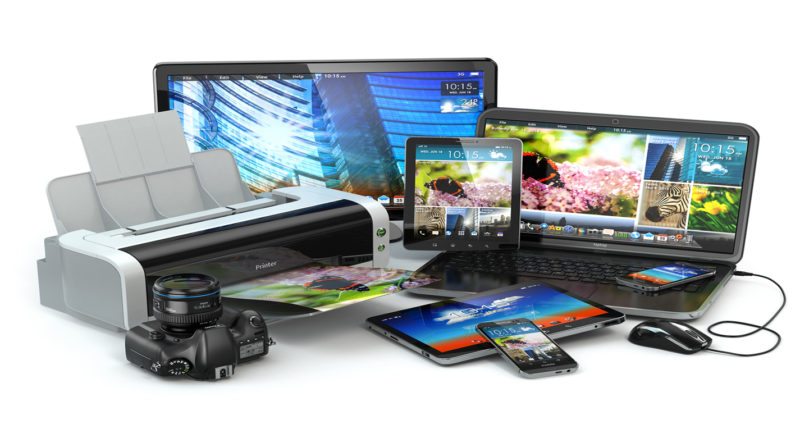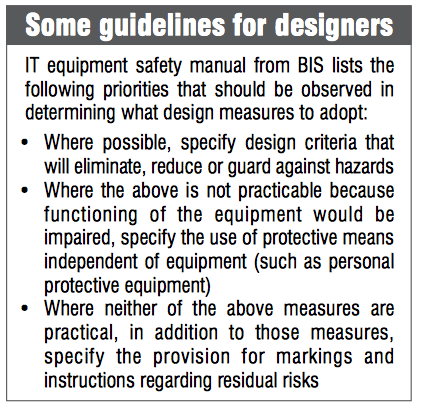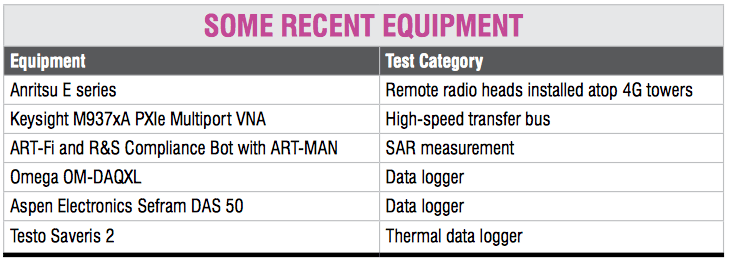Electronics makes our lives easier and interesting, but it can bring in several regulations for various reasons. For example, you cannot get your electronics wet, and magnets tend to erase data from magnetic memories.
Guidelines are put in place after proper testing based on product limitations. But how do you know if your gadgets are safe to use, or would not burn out in your hands even after proper safeguards?
Even the best of designs need testing
Compulsory Registration Scheme (CRS) by Bureau of Indian Standards (BIS) in collaboration with Ministry of Electronics and IT (MeitY) make sure that electronic gadgets are tested and certified before being released to the public. Among several standards under CRS, there is one govern- ing electronic and information technology (IT) appliances such as laptops and mobile phones.

Even the best of designs have to be tested before being let out in the hands of users and maintenance people. Fires, short-circuits and radiation are some hazards involved with untested electronics. This requires testing the devices according to certain standards.
“IS 13252 talks about electrical, mechanical and fire safety of IT and electronic products from the user point of view,” says Kalyan Varma, vice president, products, TUV Rheinland India.
These standards, however, are only for safety requirements and do not govern the performance of devices. He adds, “It does not cover performance parameters, cyber security errors or algorithmic variations at all. It is a purely electrical safety standard.”
Interestingly, standards that ensure safety of the device follow minimum compliance requirements. Varma explains, “Even in the best of products, there is the possibility of residual risk.” This residual risk can be reduced with improvisations in testing, but this still leaves a chance of error.

Specialized test chambers for explosions and RF. Batteries form an integral part of gadgets even though these are not covered under the specification. Hence, safety and performance of a device depend heavily on the battery as well.
Specialized chambers are required
for battery testing. “We have specialised bunkers usade of up to 30cm-thick walls covered with 10cm to 12cm steel for battery testing because of the possibility of explosion,” says Varma. Thankfully, the ones that do explode, do not pass the test.
Electromagnetic testing of the device checks for unintentional generation, propagation and reception of electromagnetic energy. These parameters may cause unwanted effects such as electromagnetic interference (EMI) and could physically damage the operational equipment.
Anechoic RF chambers are set up for electromagnetic compliance (EMC) testing, and the furniture inside the room is made of non-metals. “It is a completely different environment covered with observers,” says Varma. Observers are placed in the room to monitor test data. These provide us with frequency versus amplitude analysis, and the data can be checked for compliance.
Testing wireless parameters. Going wireless not only results in fewer wires and easy usability, it also brings the issue of radiation exposure. So the devices have to be tested for radiation, too. The most common use of wireless technology in our phones is for making phone calls.
Testing for proper GSM standard has to be performed in every device. “We use EMF receivers for testing electromagnetic parameters. These provide a graphical representation for frequency versus amplitude analysis,” says Varma. Anritsu Me7834L and R&S CMW500 are commonly used for testing GSM signals.
SAR is another area of concern with mobile devices. 1.69W/kg is the maximum radiation allowed under many compliance standards. The most accepted method for SAR testing involves simulating a human.
The simulated body consists of an orthogonal probe mounted on a robot arm to measure RF fields transmitted into a calibrated tissue stimulant, which is a fluid used to simulate brain or muscle tissue.

Quality of the fluid used to simulate the brain or muscle tissue is obviously important, as its electrical properties vary with frequency, temperature and age. With this method, wireless devices are tested at the highest certified power level in laboratory conditions by a SAR test system. Some common SAR test equipment are ART-MAN from Art-Fi and cSAR3D from SPEAG.
A lot of data to be logged. Another equipment commonly used in testing is a data logger. With capabilities including automated data collection, it can be activated and left unattended for a specified period prior to deployment.
Electronic data loggers have replaced chart recorders in many applications. Data loggers are becoming increasingly common for specific purposes that require monitoring for longer durations.

Temperature measurement, for example, requires devices to be operational for long hours. Data loggers have been a life-saver here. Simply connect a thermometer to the data logger and you are good to go, literally!
SDI-12 protocol allows some instruments to be connected to a variety of data loggers. MODBUS and Canbus are some other protocols being used in today’s data loggers. Some data loggers use a flexible scripting environment to adapt themselves to various non-standard protocols.

What to look ahead to
IS 13252 is focused on the safety of IT and electronic equipment, whereas other standards like IS 616 focus on the safety requirements for mains-operated electronic and related apparatus for household and similar general use.
However, test equipment used here are similar throughout the spectrum of standards. The type of equipment, however, is moving towards automation. Data loggers provide options like deploy-and-forget, where you have the option of going through measured data at your own pace.
With connectivity being the focus in equipment development, the original model of a standalone data logger is changing to one of a device that collects data but also has access to wireless communications.
We are moving away from proprietary products with commercial software to open source software and hardware devices.
In future, specialized high-speed digital data loggers could replace traditional instruments such as oscilloscopes and logic analyzers. But we are still miles away from it!







